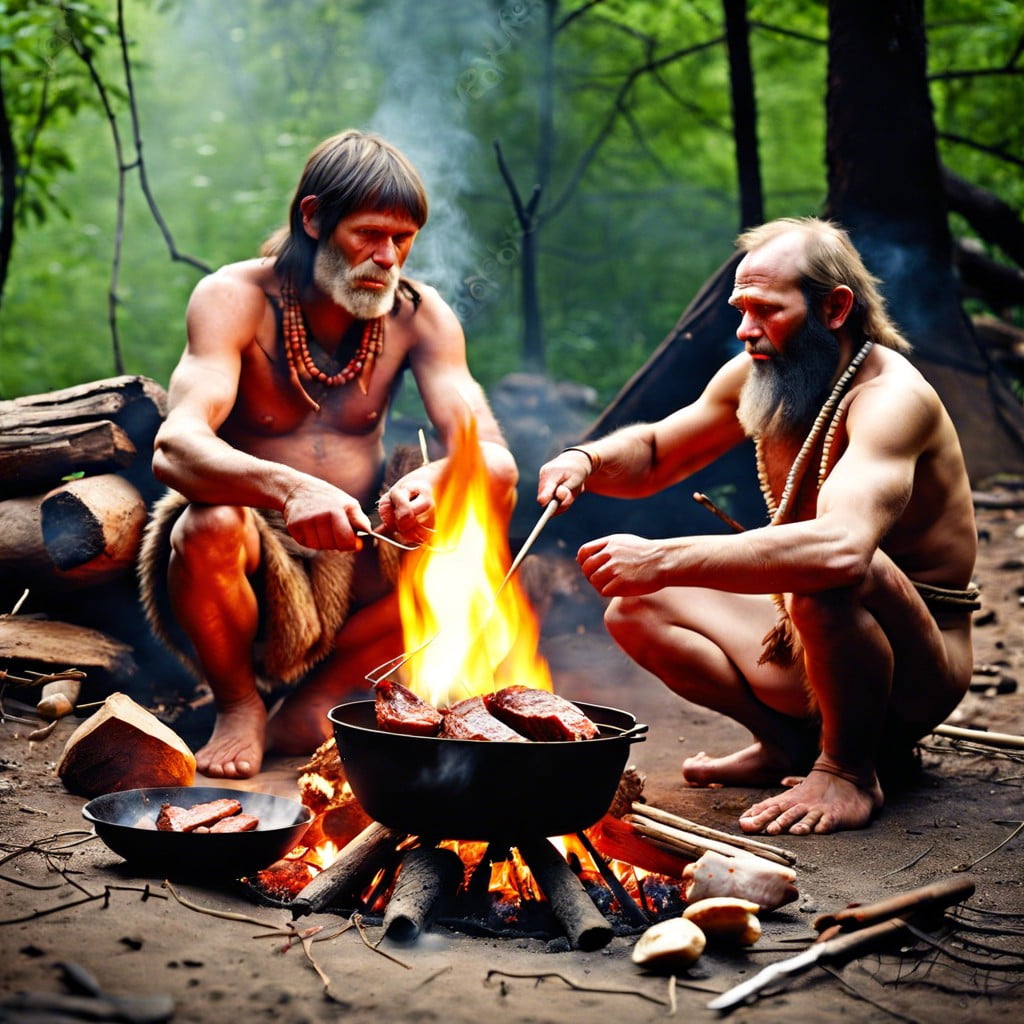This article uncovers the origins of BBQ, tracing its roots back to ancient cooking practices and its evolution into a popular global culinary tradition.
Key takeaways:
- Humans have been cooking with fire since prehistoric times.
- The term ‘barbecue’ originated from the Taíno people of the Caribbean.
- There are different regional styles of barbecue in the United States.
- The invention of the BBQ grill revolutionized the cooking experience.
- Barbecuing now embraces technology, global flavors, sustainability, and competitions.
Earliest Accounts

Humans have been cooking with fire since the discovery of its power to heat and transform food. The earliest evidence of barbecue, in its most primal form, dates back to our prehistoric ancestors who would smoke and grill their prey over open flames.
Structured barbecuing had strong roots among indigenous peoples, particularly in the Caribbean, where the Arawak Indians’ technique of slow-cooking meat over a wooden framework, or ‘barbacoa,’ laid the groundwork for modern methods.
This ancient tradition spread throughout the world, influencing various cultures and evolving over time to become the nuanced art that enthusiasts celebrate today.
The Origin of ‘Barbecue’
The etymology of ‘barbecue’ is believed to stem from the word ‘barbacoa,’ a term originally used by the Taíno people of the Caribbean to describe their method of slow-cooking meat over a wooden platform.
European explorers adopted the word, and over time, it evolved into the English ‘barbecue.’ This cooking technique was noted by Spanish explorers in the Caribbean and the American South, combining indigenous methods with Old World culinary traditions.
The ‘barbacoa’ eventually became a communal practice in the Southern United States, especially as Spanish settlers and Native Americans interacted, blending and sharing their cooking practices.
The concept spread throughout the regions, gradually incorporating local seasoning and ingredients, eventually becoming a cornerstone of American culinary culture.
Regional Styles of Barbecue
Barbecue traditions vary significantly across different areas, each with unique characteristics:
1. Carolina Style: Known for pork, this style includes both “whole hog” barbecuing and the use of only the pork shoulder. North Carolina favors vinegar-based sauces, while South Carolina often uses a mustard-based sauce.
2. Memphis Style: This style is famous for its ribs, which come “dry” with a spice rub or “wet” with a tangy tomato-based sauce. Pulled pork sandwiches with coleslaw are also a staple here.
3. Kansas City Style: A melting pot for BBQ styles, Kansas City BBQ is noted for its wide variety of meats. The slow-smoked meats are slathered with a thick, molasses-tomato sauce.
4. Texas Style: Texas is a large state with several variations, from the beef brisket central to Texas barbecue to the sausages of Texas-German communities. Cooking methods can vary from smoking over mesquite, oak, or hickory wood to the direct-heat pit BBQs found in South Texas.
Understanding these unique regional variations gives insight into the deeply rooted barbecue cultures that span the United States, reflecting local preferences and historical influences.
The Invention of the BBQ Grill
The modern BBQ grill owes its development to several innovators who transformed open-fire cooking into a more controlled experience. George Stephen, of Weber-Stephen Products, is frequently heralded for creating the first covered grill in the 1950s. This design, inspired by the shape of a buoy, allowed for consistent heat distribution and protected food from the elements.
Simultaneously, improvements in metalworking and materials after World War II facilitated the production of portable and durable grills. Gas grills entered the scene in the 1960s, offering convenience with push-button ignitions and steady heat control. These grills incorporated propane as a fuel source, which was a significant departure from the traditional charcoal and wood, enabling a cleaner and more controllable flame.
Infrared cooking technology was later introduced to offer intense and even heat, mimicking the searing capability of traditional grills but with greater energy efficiency. The incorporation of various features, such as side burners, smoke boxes, and rotisserie spits, further revolutionized the backyard BBQ experience by expanding the versatility of grilling methods available to the home chef.
Over time, these innovations have led to the diverse array of grills found today, ranging from simple charcoal kettles to high-end outdoor kitchen units, delivering diverse cooking styles to suit personal preferences and culinary ambitions.
Barbecuing Now
In the contemporary culinary landscape, barbecuing has evolved from its humble origins to a cultural phenomenon boasting a variety of techniques and trends.
- Barbecuing has embraced technology, with the advent of smart grills and temperature-controlled smokers, ensuring precision and ease.
- The globalized palate has influenced BBQ flavors, introducing a fusion of spices and marinades from different cultures.
- Sustainability movements have steered barbecuing towards ethical sourcing of meats and environmentally conscious practices.
- Competitive barbecuing has risen, turning weekend pastimes into high-stakes contests judged on taste, tenderness, and presentation.
- Modern barbecue has also become a social media affair, with enthusiasts sharing mouthwatering images and techniques online to a vast, interactive community.
These points indicate how barbecuing now transcends mere cooking, embodying a practice that is as innovative as it is steeped in tradition.